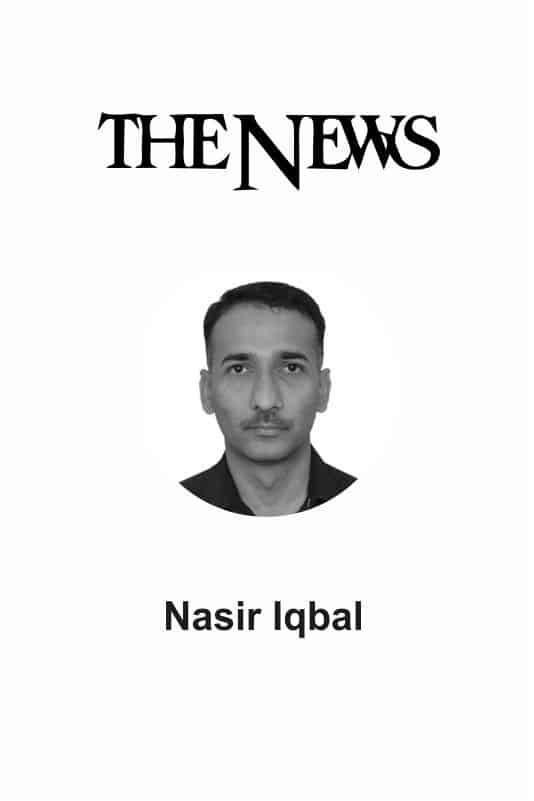
Pakistan Institute of Development Economics
- Home
Our Portals
MenuMenuMenuMenuMenuMenuMenu - ResearchMenuMenuMenuMenuMenuMenuMenu
- Discourse
- The PDR
- Our Researchers
- Academics
- Degree Verification
- Thesis Portal
- Our Portals

Institutional poverty
Eradication of extreme poverty and hunger was the first millennium development goal (MDG) agreed by all the member states of the UN in 1990 with a target to halve the percentage of people living below the poverty line by 2015. The final MDG report of 2015 claims that the number of people in extreme poverty has declined by more than half, falling from 1.9 billion in 1990 to 836 million in 2015. According to the World Bank, the percentage of people living under less than $1.9 per day at 2011 international prices, purchasing power parity adjusted, declined from 34.8 percent in 1990 to 10.7 percent in 2013, mainly driven by East Asia Pacific (EAP) and South Asia. The incidence of poverty fell from 60.2 percent in 1990 to 3.5 percent in 2013 in EAP, especially in China, and 44.5 percent to 15.1 percent in South Asia, particularly in India, during the same period.This is one side of the story. Looking at the poor regions of the world, there has clearly been no significant progress in achieving the goal of eradicating poverty. For example, people living in extreme poverty increased from 278 million in 1990 to 390 million in 2013 in Sub-Saharan Africa (SSA). Likewise, people in poverty have increased from 215 million to 281 million in low income countries in the same period.Recently, the global Multidimensional Poverty Index (MPI) has been developed to address the multidimensional nature of poverty. The MPI captures multiple deprivations in health, education and living standards. About 1.45 billion people in 103 countries are multi-dimensionally poor, accounting for 26.5 percent of the poverty rate. More than half of the world’s multi-dimensionally poor live in South Asia (816 million people), and about 342 million people are multi-dimensionally poor in SSA. About 80 percent people are multi-dimensionally poor in these two regions. Similarly, according to the FAO report, ‘The State of Food Security and Nutrition in the World 2017’, more than 815 million people were undernourished in 2016, depicting an increase in global hunger from 777 million in 2015. Over 50 percent chronically food-insecure and malnourished people live in countries affected by conflicts. The situation visibly worsened in parts of SSA and south-eastern and western Asia.Eradication of poverty and hunger remains the greatest challenges humanity faces. The changing development paradigm from millennium to sustainable puts poverty and hunger at the forefront. Ending poverty in all forms and dimensions by 2030 is the first goal of the Sustainable Development Goals (SDGs). This involves targeting the most vulnerable, increasing access to basic resources and services, and supporting communities affected by conflicts and climate-related disasters. The implementation of adequate social protection systems and sound policy frameworks, based on pro-poor and gender-sensitive development strategies, are key interventions to achieve ‘No Poverty’ and ‘Zero Hunger’ goals.Can this solve the problem? Before answering this question, we will look at the role of social safety nets (SSNs) in addressing poverty. Recent decades have seen an exponential increase in SSN programmes in developing countries. According to the World Bank, developing countries with SSNs programmes have doubled from 72 to 149 countries in the last two decades. Globally, cash transfers (CT) programmes are the main instruments for social protection. Around 77 percent countries have implemented unconditional cash transfers (UCT) programmes while 42 percent have conditional cash transfers (CCT) programmes.Pakistan launched the Benazir Income Support Programme (BISP) in 2008 as the National Cash Transfers Program (NCTP). Currently more than 5.4 million poor families across Pakistan are receiving benefits through the UCT programme – the core program of BISP. About 1.5 million families are also receiving the CCT grant for primary education. The targeted families belong to the most disadvantaged, excluded and marginalised segment of society. So for around Rs515 billion has been disbursed to beneficiaries of BISP since 2008.Despite the exponential expansion in SSNs, especially in developing countries, poverty, inequality and hunger remain very high. SSNs can be instrumental in managing poverty but are not a solution to eradicate poverty and hunger. In According to Acemoglu and Robinson, SSNs are only the proximate causes for dealing with poverty. This poses the next question: why does poverty continue despite massive public investment? To answer this question, one needs to look for potential fundamental causes of poverty.We argue that institutions are the fundamental cause of poverty and inequality in developing countries. Institutional poverty is the source of income inequality and underdevelopment. Weak institutions provide room for the exploitation of public resources by politicians and government officials for their own interest. Corruption and ineffective governments lead poverty by increasing income inequalities. According to the World Bank’s Worldwide Governance Indicators, SSA ranked 27 and South Asia 36 on the government effectiveness indicator. In the control of corruption indicator, SSA ranked in the 31st percentile, and South Asia and EAP in the 38 and 56 percentiles respectively. The situation is similar to the rule of law and regulatory quality indicators. These statistics show a miserable situation of institutional quality.To achieve the goal of no poverty and zero hunger in 2030 according to the SGDs, it is necessary to address institutional poverty and income poverty. The reformed institutional framework guarantees equitable distribution of resources and the provision of social and economic services to all citizens. Economic growth must be inclusive to ensure equal distribution of resources. Developing countries must invest in reforming institutions to benefit from the expansion of social safety nets programmes.Institutional reforms may require the restructuring and improvement of the legal framework, taking a carrot-and-stick approach to ensure accountability and transparency, enforcing rule of law and ensuring political stability. Without addressing institutional poverty, the dream of no poverty and zero hunger can never materialise.
Download full PDF


